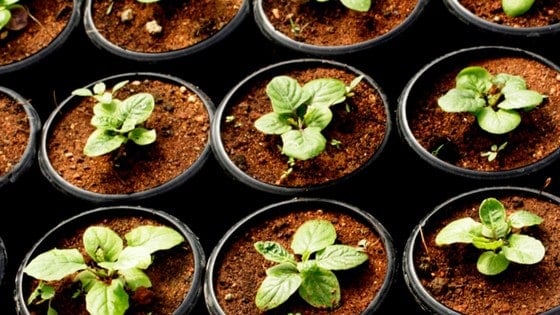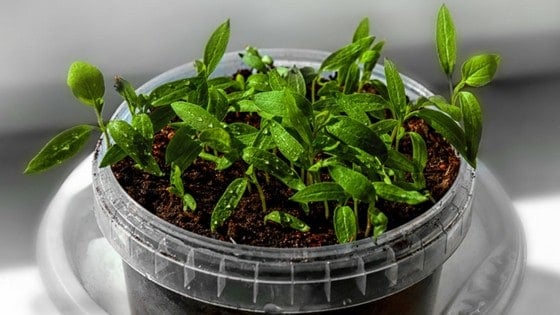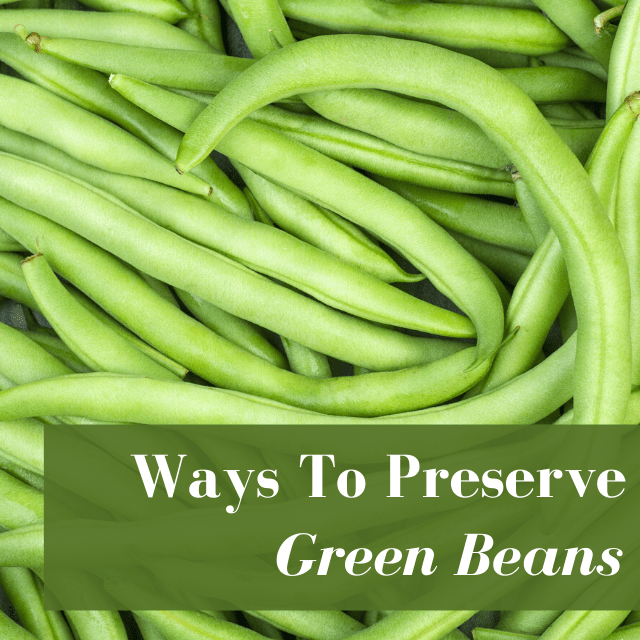Zucchini is, without a doubt, one of the easiest vegetables you can grow. Unfortunately, with that ease comes a question – what in the world are you going to do with all of the zucchini you harvest?
Zucchini is the plant that keeps on giving, but it’s easy to get overwhelmed by a bountiful harvest. If you just can’t figure out what to do with it, here are some methods of preserving zucchini that may help you out.
Table of Contents (Quickly Jump To Information)
Freezing Zucchini
Freezing is one of the most popular methods of preserving zucchini. Not only can frozen zucchini be used in your favorite meals, but it can also be used in baking (zucchini bread, anyone?).
You can freeze zucchini in several ways. One of the easiest ways to is to blanch and freeze zucchini halves. After they’ve been thawed, zucchini halves can be used for stuffing or baking. All you will need to do is let them thaw and then apply your favorite filling!
Another way you can preserve zucchini is to slice or dice it up before freezing. Zucchini that has been sliced in this way can be used for soups, stir fries, sautees, and even casseroles. Just keep them frozen until you’re ready to use them to prevent them from becoming a sloppy mess.
You can also freeze shredded zucchini, which does not need to be blanched beforehand and will hold up remarkably well in frittatas, baked goods, and other recipes. You can even make a tasty, nutritious zucchini risotto! Just make sure you drain off the excess liquid after thawing the shredded pieces.
Zucchini can be frozen as ready-made zoodles, too. Zucchini noodles are delicious and nutritious alternatives to your favorite pasta. You can use them frozen but need to avoid overcooking them.
Finally, zucchini puree is an option to consider. It is the perfect addition to soups, smoothies, sauces, and baked goods. It can be used in any baked goods recipe that calls for it, too!
Dehydrating Zucchini
Dehydrated zucchini takes up minimal space and is a great alternative for preserving zucchini if you don’t have a lot of freezer space. When dehydrated, four pounds of zucchini (or one large zucchini, in other words) will only take up one pint jar.
To dehydrate zucchini, slice it into thin rings. You can choose to leave the skin on or to peel it – the choice is yours. Place the rings on the racks of your dehydrator and process them for four hours, or until they are crisp and brown.
After zucchini has been dehydrated and stored, it will last for many months. You can add dehydrated zucchini to boiling water when you add pasta, as this will rehydrate the zucchini and make for a delicious sauce.
Pickled Zucchini
Pickled zucchini can be stored on its own, or you can add some other vegetables like sweet bell peppers and onions for a delicious relish. Zucchini relish is sweet yet tart, possessing a lovely tang that will really spruce up your typical sandwiches, burgers, and salads.
For four pints of zucchini relish, or pickled zucchini, you will need about four cups of zucchini, two cups of peppers, and two cups of onions. You will also need 3 ½ cups sugar, ¼ cup pickling salt, 1 Tbsp celery, 2 tsp mustard, and two cups of apple cider vinegar.
Begin by chopping your vegetables. Sprinkle salt over the vegetable and let them stand for two hours. After two hours have passed, drain them and rinse them well. Add your spices, vinegar, and sugar to a large pot, bringing it to a low simmer before you add your vegetables. Stir and then let the mixture simmer for another ten minutes.
Once everything is combined, you can choose to process your relish in a water bath canner or to put it in the refrigerator. If you can your jars, you will want to process them for ten minutes and allow them to cool for at least 12 hours before storing them.
Zucchini Pickles
Not to be confused with pickled zucchini, making zucchini pickles is a fantastic method of food preservation. All you will need is some onions, turmeric, and a few other species for a delicious brine.
To make zucchini pickles, start by washing your zucchini, trimming, and discarding the blossoms. Cut the zucchini into ¼ inch slices and place them in a large bowl before salting them. Let them sit for two hours before draining and rinsing the slices with water. This will help remove excess liquid.
While you are waiting for your zucchini slices to dry out, you can prepare your canning equipment. You will want to wash and boil your jars, keeping both the jars and lids warm until you have your ingredients ready.
Your brine will consist of three cups of apple cider vinegar, two cups of cane sugar, and ⅓ cup canning salt. You will also add ground mustard, turmeric, celery seed, and black peppercorn, to taste.
Combine all of your brine ingredients in a large pot. Heat to a boil. Add your zucchini and bring the pot back up to a boil. Reduce the heat and simmer for ten minutes. After the mixture is thoroughly heated, ladle your zucchini and brine into hot jars. Leave about ½ inch of headspace.
Center your lids on the jars and screw them on tightly. Place the jars in a water bath canner and adjust the water level once the jars are inside to make sure the water is two inches above the jars. Bring the water to a rolling boil. Process the pickles for ten minutes.
Let the jars cool, then label and date them before storing. The cooling process should take about 24 hours.
Cellaring Zucchini
If you have a root cellar, you may be able to store zucchini without doing anything to it at all. To do this, you will need young, unblemished zucchinis. They should be wrapped in tissue paper or layered in shallow containers surrounded by straw. This will increase their humidity. Store the fruits in a cool basement or root cellar. You can put them in containers such as plastic garbage cans or storage bins to do this.
Once you put the zucchini in a container, you will want to cover them with at least one foot of insulating material, like straw. Each layer of zucchini should be separated by straw to reduce moisture, too. When stored in this way, zucchini will last for several weeks at a time.
Salted Zucchini
You can store brined zucchini without having to do too much at all. To do this, select zucchini that are small and ripe. Wash them and place them in a canning jar before covering them with a 10% brine. Make sure there’s at least an inch of headspace.
How do you make a 10% brine, you might ask? It’s simple. All you need to do is stir six tablespoons of pickling salt into a quart of water until it has completely dissolved.
Next, use a small plate to cover the vegetables and keep them submerged. Place the container or a tray and store it at 65 degrees for up to four weeks. You should then transfer it to a collocation, like a refrigerator. Check it at least once a week if white scum appears, remove it, as it can create off flavors. You will want to keep your vegetables completely submerged during this process.
Most salted zucchini can be stored for six months. You will just need to soak them in cold water for twelve hours before using – then you can use them in any recipe calling for fresh zucchini.
Can I Can Zucchini?
One of the only ways that preserving zucchini cannot be done is by canning. You cannot can summer squashes because they become too soft during the canning process, which leads to inconsistent heat distribution that renders the finished product unsafe.
Even if you have a pressure canner, it’s not recommended that you can zucchini or any other summer squash. Instead, stick to one of these popular methods of preserving zucchini – with so many methods to choose from, you really shouldn’t feel the need to try an unsafe canning recipe!
Maat van Uitert is a backyard chicken and sustainable living expert. She is also the author of Chickens: Naturally Raising A Sustainable Flock, which was a best seller in it’s Amazon category. Maat has been featured on NBC, CBS, AOL Finance, Community Chickens, the Huffington Post, Chickens magazine, Backyard Poultry, and Countryside Magazine. She lives on her farm in Southeast Missouri with her husband, two children, and about a million chickens and ducks. You can follow Maat on Facebook here and Instagram here.






